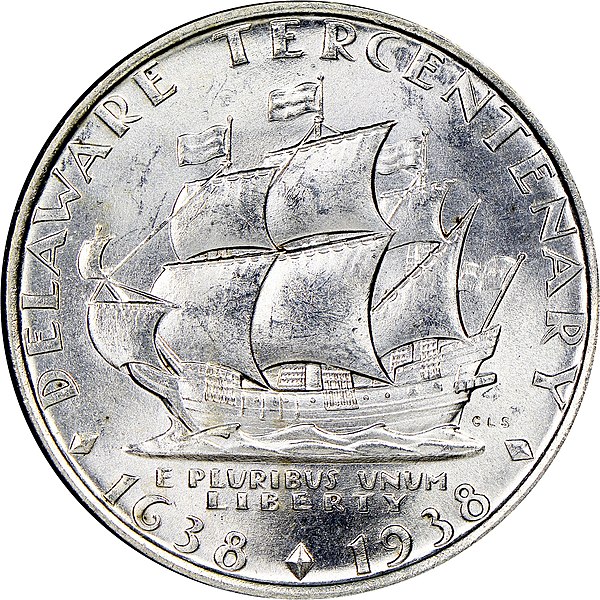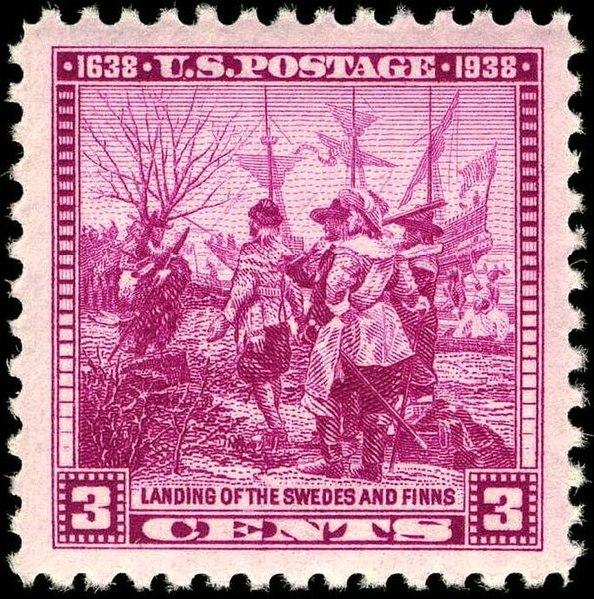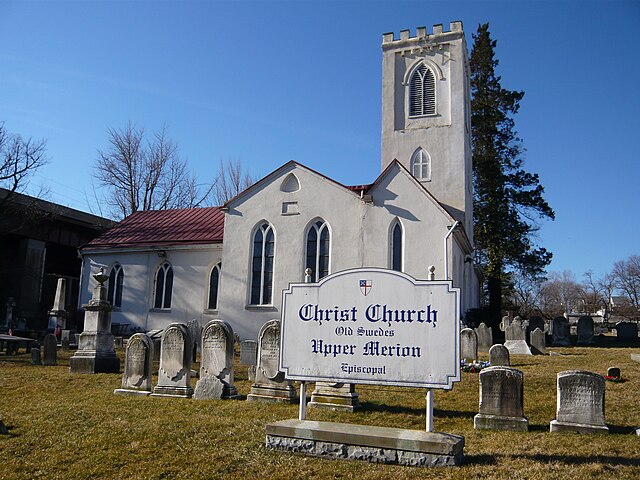Kalmar Nyckel was a Swedish ship built by the Dutch famed for carrying Swedish settlers to North America in 1638, to establish the colony of New Sweden. The name Kalmar Nyckel comes from the Swedish city of Kalmar and nyckel meaning 'key' in Swedish. The name was also a tribute to Kalmar Castle which was a symbol of power during the time of the Swedish Empire when Sweden was a military great power. A replica of the ship was launched at Wilmington, Delaware, in 1997.
Calmare Nyckel oil painting by Jacob Hägg, 1922
The Kalmar Nyckel on the reverse of the 1937 Delaware Tercentenary half dollar, designed by Carl L. Schmitz
The bow of the replica Kalmar Nyckel including a two-tailed lion figurehead, one tail symbolizing the old ship and one symbolizing the new ship.
In Chesapeake Bay, 2008, flying from foretop to stern the Finnish, Swedish naval, Dutch and American flags.
New Sweden was a colony of the Swedish Empire along the lower reaches of the Delaware River between 1638 and 1655 in present-day Delaware, Maryland, New Jersey, and Pennsylvania in the United States. Established during the Thirty Years' War when Sweden was a great power, New Sweden formed part of the Swedish efforts to colonize the Americas.
Little Catechism of Martin Luther translated into local Native American languages by Swede Johannes Campanius (from 1696).
The C. A. Nothnagle Log House in Gibbstown, New Jersey, built in 1638 in New Sweden, is the oldest house in New Jersey.
A U.S. Postal stamp commemorating the founding of Wilmington, Delaware, once part of New Sweden (1938)
Old Swedes Church, built in the era of New Sweden, in Swedesburg, Pennsylvania








